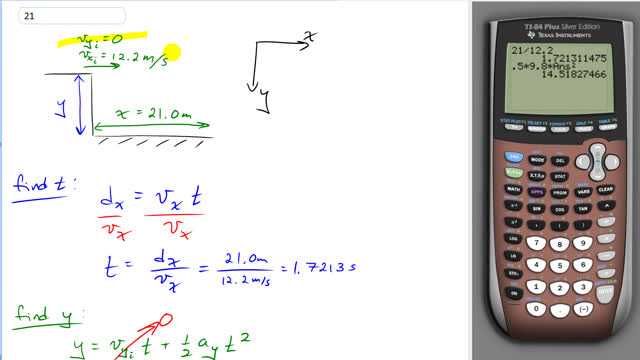
A ball thrown horizontally at 12.2 m/s from the roof of a building lands 21.0 m from the base of the building. How high is the building?

In order to watch this solution you need to have a subscription.
This is Giancoli Answers with Mr. Dychko. So this ball is thrown horizontally from the rooftop and when it says thrown horizontally that means the vertical velocity is initially zero and its velocity is only horizontal so there's only an x-component to the velocity. So that's 12.2 and it lands 21 meters from the base of the building we are told and we are gonna take down to be the positive direction and to the right being positive; the first thing we have to do is figure out how long the ball spends in the air and then knowing that, we'll be able to calculate this height. And so first we'll take this equation here for displacement when you have constant velocity as is the case in the x-direction there's no acceleration horizontally gravity acts only vertically. And so the horizontal displacement or in other words, this distance from the base of the building where it lands equals the horizontal velocity times time and we'll divide both sides by v x to solve for t and we have t is 21 meters divided by 12.2 meters per second which gives 1.7213 seconds in the air. And then we'll find the height of the building now because we know that the distance that the ball falls equals the initial y-component of its velocity times time but without the zero since we are told there's no initial y-component to its velocity it's thrown horizontally plus one-half acceleration times time squared and acceleration in this case is 9.8 meters per second squared positive because we took down to be the positive direction times a half times the time squared and that gives 14.5 meters height of the building.